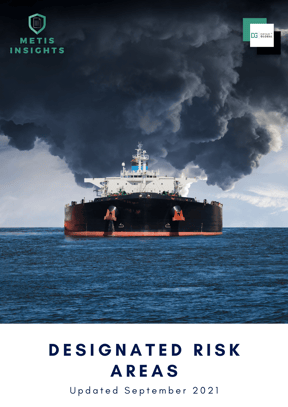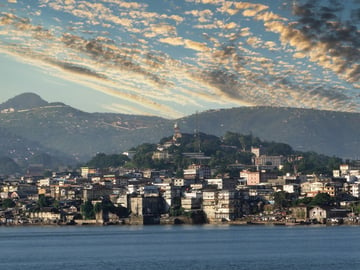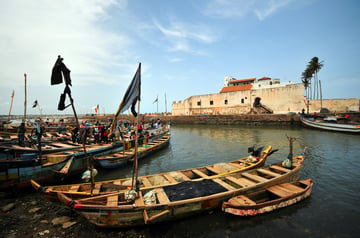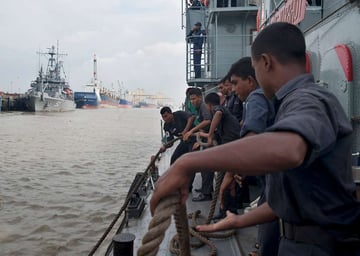High Risk Areas (HRA)
Designated Risk Areas – Arbitrary Lines or Useful Tools for the Illustration of Risk?
Free Download
Weekly Maritime Threat Assessment
The security tool for the maritime professional
Free Download
METIS INSIGHTS: Maritime High Risk Areas (HRA)
Designated Risk Areas – Arbitrary Lines or Useful Tools for the Illustration of Risk?
This edition of METIS Inform is a revised issue of a piece we published in May 2021. The content of that piece has since partly come to fruition, with the shipping industry noting the need for a revision of the designated areas of risk, or High-Risk Areas (HRAs), in the Indian Ocean and the need for a more dynamic and responsive approach to risk and contemporary maritime security. This piece has been edited to include recent changes to the BIMCO et al HRA in the Indian Ocean, and acknowledgments from key industry actors of the necessary changes to be made in global maritime security responses.
Designated Risk Areas – Arbitrary Lines or Useful Tools for the Illustration of Risk?
This edition of METIS Inform is a revised issue of a piece we published in May 2021. The content of that piece has since partly come to fruition, with the shipping industry noting the need for a revision of the designated areas of risk, or High-Risk Areas (HRAs), in the Indian Ocean and the need for a more dynamic and responsive approach to risk and contemporary maritime security. This piece has been edited to include recent changes to the BIMCO et al HRA in the Indian Ocean, and acknowledgments from key industry actors of the necessary changes to be made in global maritime security responses.
The art of drawing lines on maps is fraught with contention. Sir Mark Sykes and François Georges-Picot are likely unfamiliar to many, but their names and actions live on. Their role in carving up the Ottoman Empire towards the end of the of WWI created artificial borders in the Middle East - determined arbitrarily with a ruler and with no regard to ethnic or sectarian characteristics - highlights the unintended cartographic consequences that can arise when applying rigid models of expression to inherently dynamic areas. Designated areas of maritime risk, or HRAs, have shown themselves to be similarly contested and controversial spaces. Countries whose territorial sea is part of a HRA have questioned the legitimacy of such areas, arguing that having their waters presented in such a manner has adverse implications for trade.
The current designated areas of risk laid out by the JWC stem from an earlier concept of a single HRA in the Indian Ocean. The spatial concept of HRAs was introduced in Version Three of the Best Management Practices (BMP) in 2010 to complement the International Recommended Transit Corridor (IRTC) and was defined as the area where piracy attacks have taken place. While not legally binding, the BMP protocols, and with it the HRA, were endorsed by several international bodies, including the UN Security Council, multiple states, and the Contact Group on Piracy off the Coast of Somalia (CGPCS). The gradual industry-wide adoption of the HRA framework has led them to become the central spatial definition in which the fight against piracy would take place. HRAs have since evolved to become a major tool transcending all aspects of the maritime security domain. However, the ownership and authority to define risk based on the parameters and locations of HRAs continues to be contested and is fraught with issues and unintended consequences.
Insurers such as the Lloyd’s Market Association’s (LMA) Joint War Committee (JWC) use designated areas of risk as a reference point to define war risk zones for the purpose of providing their members with clear and unambiguous zones through which additional war risk premiums are applicable. The JWC comprises underwriting representatives from the LMA and the International Underwriting Association (IUA). Usually meeting quarterly and when required by exception, it is responsible for reviewing, designating and updating areas of war risk to which additional premiums apply. This practice is echoed via a collaborative agreement between the Baltic and International Maritime Council (BIMCO), International Chamber of Shipping, International Association of Dry Cargo Shipowners (INTERCARGO), International Association of Independent Tanker Owners (INTERTANKO), and Oil Companies International Marine Forum (OCIMF) who designate their own areas of risk as an industry guide for the implementation of enhanced security measures.
The JWC Indian Ocean HRA was reduced in May 2021. However, the changes made to the area offshore Somalia were felt by many within the industry to be overly cautious. Echoing an increasing desire for a more dynamic assessment and accurate interpretation of risk areas throughout the industry, the notional HRA, as defined by BIMCO, INTERCARGO, INTERTANKO and the OCIMF, has been further reduced in changes that apply from 1 September 2021. This agreement reduces the HRA in Yemeni and Somali territorial waters in response to the notable lack of piratical activity in these areas in recent years. BIMCO et al have also committed to developing and applying a new approach for assessing maritime security and risk before the end of the year.
Strengths and Limitations
The persistence of the JWC HRA concept as the de-facto arbitrator of risk within the maritime domain is testimony to its clarity of illustration and simplicity of application. Fundamentally the methodology of HRAs is highly effective at providing a baseline definition of key global maritime risk areas which allow for the effective and unambiguous application of War Risk premiums within them. In turn, this gives the wider shipping industry a clear benchmark against which to understand the commercial impacts from using specific trading routes. The JWC designated risk areas are aligned with BMP Guidelines and provide a complimentary and holistic understanding of risk areas alongside recommended mitigations.
The concept and efficacy of the JWC HRA remain sound 12 years after their initial implementation. However, the dynamic nature of risk within the maritime domain is seldom captured by static methods of interpretation. Limitations of the JWC HRA model can be cited as an example of a lack of geographic flexibility and an inability to articulate the nature of risk within such areas. Managing Director of OCIMF, Robert Drysdale, noted this lack of flexibility, stating that the September update to the notional Indian Ocean HRA “is an interim measure to allow for the continued application of BMP 5,” whilst the other signatories to new HRA agreement “undertake substantive work to address maritime security threats in a global context.” It is, however, vital to note that a granular and dynamic understanding of risk is not the primary utility of the JWC designated risk areas, and nor should its utility be solely judged as such.
Unintended Consequences
Whilst the JWC HRA model allows underwriters the ability to stipulate mitigations, the framework itself does not aim to serve as a model against which commercial risk-based decisions are taken. This is, however, an unintended consequence arising from its prominence within maritime security frameworks. The risk environments encountered within the maritime domain are noteworthy for their complexity as much as their severity. Risk based decision-making remains an integral part of global shipping and is particularly prevalent when trading within complex environments. Decisions relating to routing and mitigation, including vessel hardening and the deployment of armed security, are often costly and time consuming. Consequently, they should only be made after considering the true nature of risk as it is at the time of transit and not based on arbitrary regional allocation.
As is perfectly illustrated within the Gulf of Guinea, serious incidents are not exclusive to defined areas of risk. Notwithstanding the expansion of the Gulf of Guinea HRA in September 2020 (JWC-025), there have been 10 serious maritime security incidents occurring beyond the immediate confines of this area since January 2020. This stands in stark contrast to the current Indian Ocean HRA, which continues to extend 460nm beyond the shores of Somalia despite a near total absence of incidents. Whilst this presents significant issues for the wider underwriting process, companies taking risk-based decisions solely in line with the designation of an area of risk, do so at considerable risk to their crews and operations.
Clarity of Risk
Beyond the geospatial nature of risk, there are issues of risk classification. The current HRA model falls short in providing clarity about the precise nature of risks within these areas. Consequently, companies should be cautious about employing standardised mitigations which may not reflect the risk at the time of transit. Examples of the dynamic nature of risk can be observed within the lower Red Sea and Gulf of Aden, where despite their continued inclusion within the JWC HRA, the principal risk has evolved from one of piracy to one of traditional war risk impacts. In line with this change in risk profile, there are significant cost implications for vessels failing to recognise these shifts shift and potentially applying standardised mitigations in an incoherent manner.
Whilst in the broadest sense, designated areas of risk have a profound utility, these can however be deeply misleading to companies when making risk-based decisions. The insurgency in Mozambique’s Cabo Delgado region has blighted the area for over a year. However, it was only in May of this year that the region became a designated HRA. In another example, attacks within the Bay of Campeche, Puerto Dos Bocas and Ciudad del Carmen within the Gulf of Mexico have shown a protracted and worrying upward trend in incidents, yet remain free from designated risk area status.
Of Economies and Influence
The designation of risk areas is a task of considerable sensitivity and is no doubt one which the JWC does not take lightly. When designated areas of risk are drawn to include developing countries’ territorial waters, they can exacerbate existing adverse socioeconomic conditions. Moreover, designated areas of risk and the associated premium and subsequent mandated mitigations can substantially increase the cost of trading in these areas.
In response to the designated area including most of the north-western Indian Ocean, India, Oman, and Egypt submitted requests to the Contact Group of Piracy off the Coast of Somalia (CGPCS) Working Group 3 in 2013 for the boundaries to be reduced. In 2015, these boundaries were reviewed by the CGPCS to no longer include the Gulf of Oman, the Red Sea and both Pakistan and India’s Exclusive Economic Zones. Fifteen states in total sought the review of the risk area boundaries, including wealthy states such as Qatar, the United Arab Emirates and Saudi Arabia. The concerted effort of these states over four years to reduce the risk area boundaries and remove their territorial waters is indicative of how seriously the added cost of trading in designated risk areas impacts littoral states’ economies.
Furthermore, reports emerged that the Omani Sultanate successfully lobbied for its southern ports to be removed from the designated risk areas in the Arabian Sea in the latest boundary revisions. For Oman having initially been added in 2019 via JWLA 024 it was imperative to have the Port of Salalah removed from the area, so at least one strategically central port was not impacted by the added premiums and could better facilitate trade. Oman’s immediate reaction occurred because its leadership was cognisant of the significant economic impacts of being included within the risk areas carry. Less wealthy or influential states, such as Somalia, do not have the capability or capacity to effect such change, leading to enhanced barriers to trade and economic development of such states. These states are also the ones from which piracy often develops, with piracy and maritime crime themselves stemming from socioeconomic hardship onshore. The inadvertent discicentivising of trade therefore risks contributing to the very problems it seeks to protect against.
The September update to the BIMCO et al Indian Ocean HRA suggests a commitment to keeping designated areas of risk accurate to the contemporary maritime security environment. Whilst the Somali and Yemeni governments do not have the means to effectively lobby for a reduction in the HRA boundaries in their territorial waters and Exclusive Economic Zones, commercial operators and organsiations also impacted by the increased costs associated with transiting through HRAs do have the resources to challenge the decisions taken. This can be seen in the September 2021 update, with the signatory organisations acknowledging that maritime security threats have changed and become more dynamic, and therefore so should the security mechanisms that are in place. The first step is reducing the HRA in the Indian Ocean, which was designed in response to piracy in the region, which is drastically reduced in East Africa and has instead become focused within the Gulf of Guinea.
The changes to the Indian Ocean HRA show that the maritime security industry increasingly recognises that maritime security is a global problem that needs a holistic and reflexive response which adapts to the actual maritime security environment, as opposed to assessments based on legacy considerations. However, this does not reflect a change to the official JWC area, and therefore there is no change to associated insurance premiums. The changes made by BIMBCO and other key industry actors places pressure on the JWC to revise its designated area of risk in the Indian Ocean. Considering the decision taken by BIMCO et al, any decision by the JWC to not to alter the Indian Ocean HRA will be hard to justify and may further erode confidence in how it designates areas in which additional war risk premiums are applicable.
It is beyond doubt that designated areas of risk in their current form are an important tool for maritime commercial operations, bringing much-needed clarity to the complex issue of benchmarking war risk insurance. However, it is also vital that commercial operators remain aware of the vulnerabilities in applying risk-based decision making against such areas without additional pre-transit due diligence. The process of designating areas as high risk, their utility in accurately portraying the true nature of risk in a timely manner, and their subsequent use in mandating mitigations should be subject to continuous independent review. For all commercial operators, the designation of areas as High Risk must not be taken as de facto and seen as a sufficient alternative for independent transit risk assessments. It is vital that these are sought for all commercial operations within complex environments in order to capture the true nature of risk at the time of transit. Only through such a process can commercial operators be certain to capture the true nature of risk at the time of transit.
Latest West Africa Security News
Featured in Channel16
Re-Imagining Africa’s Agency in Global Maritime Security
Maritime Security Cyber Security Maritime Piracy West Africa South Africa north africa East Africa Durban Horn of Africa
To address rising maritime security challenges along the African coastline, including the capture of the fishing vessel Almeraj 1 off the coast of Somalia, the Indian Ocean Commission (IOC) and Republ...
Coastal waters turning into ‘world’s biggest transnational crime scene’
Africa's coastal nations are grappling with a surge in illegal, unreported, and unregulated (IUU) fishing, piracy, and drug smuggling, transforming African waters into a hub for transnational crime, a...
Nigeria, 3 Others Launch Operations to Combat Sea Piracy
Maritime Piracy Nigeria Kidnapping gulf of guinea West Africa Guinea Nigerian Navy armed robbery
Nigeria, Benin Republic, Togo, and Niger Republic have joined forces to inaugurate “Operation Safe Domain II,” a collaborative effort aimed at eradicating piracy and maritime crimes in the Gulf of Gui...
Dryad Global Annual Report: Key challenges facing the Gulf of Guinea
Dryad Global's CEO Corey Ranslem talks to Dr. Okafor-Yarwood about the key challenges facing the Gulf of Guinea in the continued fight against piracy and maritime crime. In 2022, incidents of piracy a...
Free Download
Weekly Maritime Security Threat Assessment
The free infographic tool for maritime professionals







